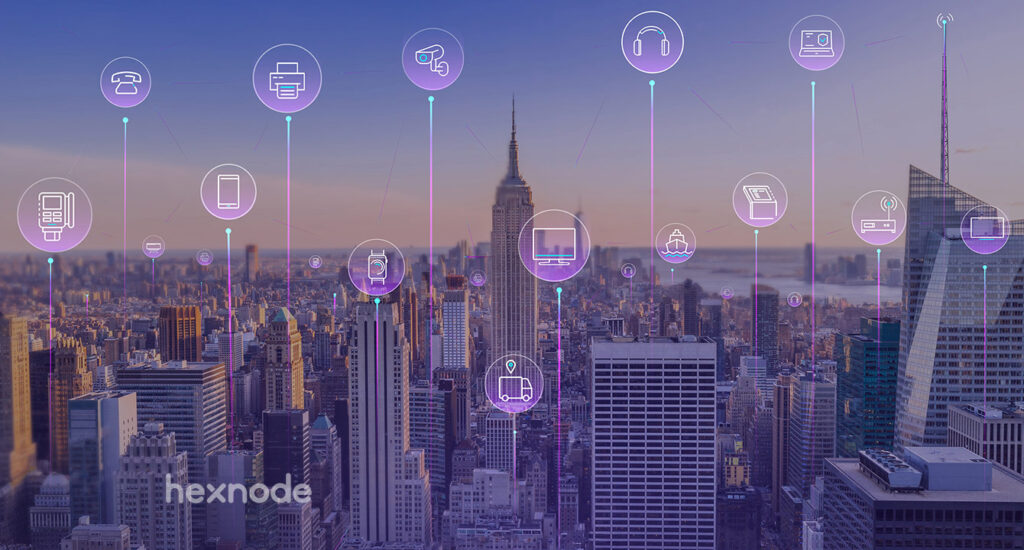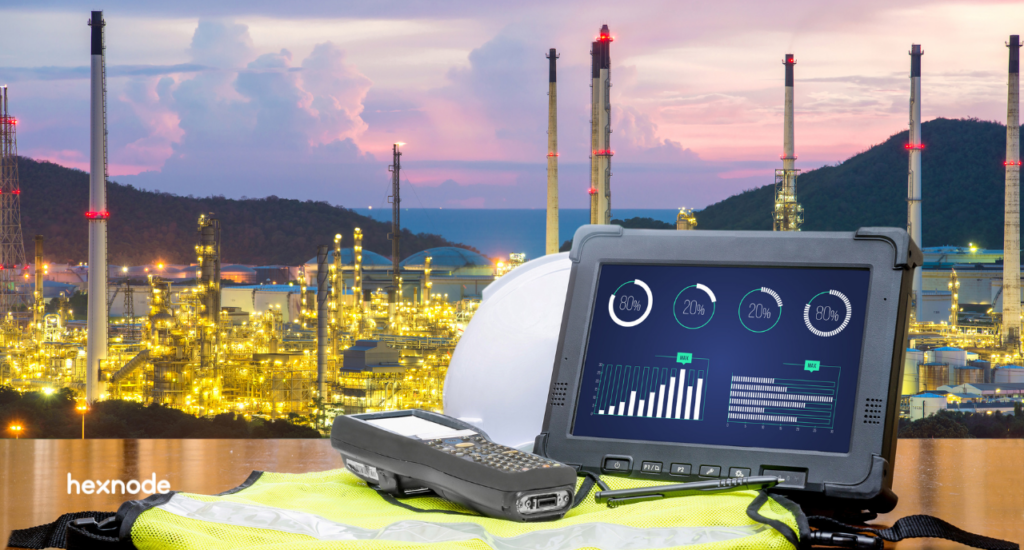Enterprise efficiency and productivity is reaching new levels every year, especially with the introduction of new technology that streamlines workflows of entire organizations. The advent of the pandemic has seen remote work culture take the world by storm, and work is getting done at an astonishingly faster rate. Organizations have started to reconsider their entire infrastructure to fit the modern work culture.
If there’s anything that the COVID-19 and lockdown has taught us, it’s the importance of frontline workers as one of the most crucial parts of an organization – vital to the wellbeing of organizations, society and the global economy. Therefore, the rise of modern work culture and total digital transformation must be moulded in such a way, so as to improve workforce efficiency and productivity.
The workplace may be changing, but that doesn’t mean frontline workers must be abandoned. The pandemic was tough, but one could argue that a major reason why the global economy didn’t tank further was because of our frontline workers. Unable to go home, they have weathered health risks, supply chain shortages, shift overloads and so on. A study from Microsoft states that 90% of organizations depend on frontline workers.
Tech – threat or empowerment?
The rise of new technology that automates the workflow of an organization is generally seen as a threat to frontline workers. The opposite of this, in fact, is the truth. The job opportunities that arise from new tech related jobs on the work front has become an exciting prospect for most frontline workers, and is generally viewed to further sophisticate their existing duties with greater efficiency and productivity.
With the right tech and tools, organizations can empower shift workers, improve their skillsets and ultimately, improve workflows across the frontline.
Now to our next point. Once frontline workers are equipped, those with shifts will have shared devices with other workers at different points of the day. This is especially true for industries like healthcare, where workers will have changing shifts, and in some cases, move to other locations entirely. They will need their own work profile assigned to them with the right application regarding patients, medical information and so on. Regardless of where their workstations/devices may be, each worker will need their own individual settings, configurations and access to applications and information relevant to only them.
Workers with roaming shifts will require access to the right information whenever they’re on-site, in remote locations or in emergency situations. In situations like these, policies and configurations relevant to each employee must be deployed to ensure appropriate access. A Unified Endpoint Solution like Hexnode UEM would be a viable option to adopt when taking all these conditions into consideration.
Healthcare workers, field-based utility technicians and other on-site frontline workers require purpose-built, enterprise grade devices that provide access to the relevant information, provide customer service and access to the required applications. In cases where device remote assistance is required, frontline workers must be able to solve work-related issues in order to keep efficiency and productivity levels high. Such devices can be reused in multiple shifts by other workers, with separate profiles granting access to applications and information relevant to their duties. This not only increases operational capacity; it drastically reduces device costs (as the number of devices required is less).
Implementing such configurations is easier said than done. Since multiple users use the same devices, IT admins must ensure that information or custom configurations must not overlap different accounts. A strategy must be built that allows for re-usage of a single device across different shifts, accounts, locations and job functions. Different accounts will have varying clearance levels, which by extension means some employees will have access to more private corporate data more than others.
Here are a few key considerations enterprises must pay attention to when setting up a multi-user strategy:
- Corporate access control: ‘Control’ is the key word here. Resources common amongst device users who pick up a specific shared device must be identified. Those resources/applications unique to specific users based on job function and clearance level must also be identified. This classification preserves time, and allows IT admins to pre-install common resources onto the devices. With the help of UEM, unique resources can be deployed onto devices based on user grouping, device models and so on. The required policies can be applied to specific user groups that showcase or hide the apps relevant to a specific user. This ensures that sensitive corporate data will not be exposed to employees without the required clearance levels.
- Privacy of user data between sessions: Data privacy is a key aspect that could come into danger if the right configurations are not made. Shift workers using the same device could access enterprise apps used by the previous user if the app is not exited properly. With a Unified Endpoint Management solution, application data can be cleared every time an enterprise app is used, resetting the app back for the next user. Data common to each user can be kept, while those reserved for each employee will be cleared after each session. This ensures that workers will not have issues logging into information assigned to them on particular apps, as well as protect user data.
- Single-Sign On (SSO): When a worker picks up a device left by the precious shift worker, the first thing they must do is login in to the relevant applications to commence their job function. However, the process of logging in manually to each application will be perceived as cumbersome and time-consuming, which will affect productivity and efficiency. To eliminate the need to log in multiple times, a Single-Sign On solution can be adopted, where the user can log into the relevant applications.With the help of certificates applied to each specific user, IT admins can ensure that logging into the required apps for each worker is seamless and time-saving. Just log in once at the start of a shift and automatically gain access to your applications. Once the current user is logged out, the certificate can be removed from the UEM console, preventing the next user from accessing restricted information.
Device management capabilities that can be leveraged
As an added measure, device management controls offered by UEM can be leveraged to further protect and secure devices from tampering.
- Android Enterprise: The controls that come with devices enrolled into Android Enterprise – setting up Profile Owners for separate users, for network configurations, prevention of network modification, disabling USB debugging to prevent data leakage. This is just a few controls that can further secure devices.
- OEMConfig: For enterprises that want to go above and beyond with controls not present in UEMs, integrations with OEMConfig apps can provide additional device control capabilities. Display settings, system update settings, advanced Wi-Fi configuration settings are a few examples.
- Custom user workflows: With the help of UEM, custom user workflows can be used, that automatically kick in if certain conditions are violated/not met. In some cases, certain applications or functions can be locked down for the duration of a user’s shift. This ensures that the device and application is operated at maximum efficiency. The autonomous Kiosk Mode feature for iOS devices is one such feature, which ensures that iOS devices can be locked down to specially developed apps when the application is launched. It will exit the kiosk mode at the specified time or when the user logs out of the app or when the task is completed.
Evolution of the frontline
The advancements in technology that has automated many processes shouldn’t be seen as a threat, but as an opportunity. A new avenue for frontline workers to learn new skillsets; to open themselves up to new job opportunities, to increase productivity and efficiency across the frontline and to open new lines of communication between the frontline and the front office.
A solid shared device management strategy could just kickstart this entire process, benefiting the entire organization by protecting data and enhancing employee experience.





